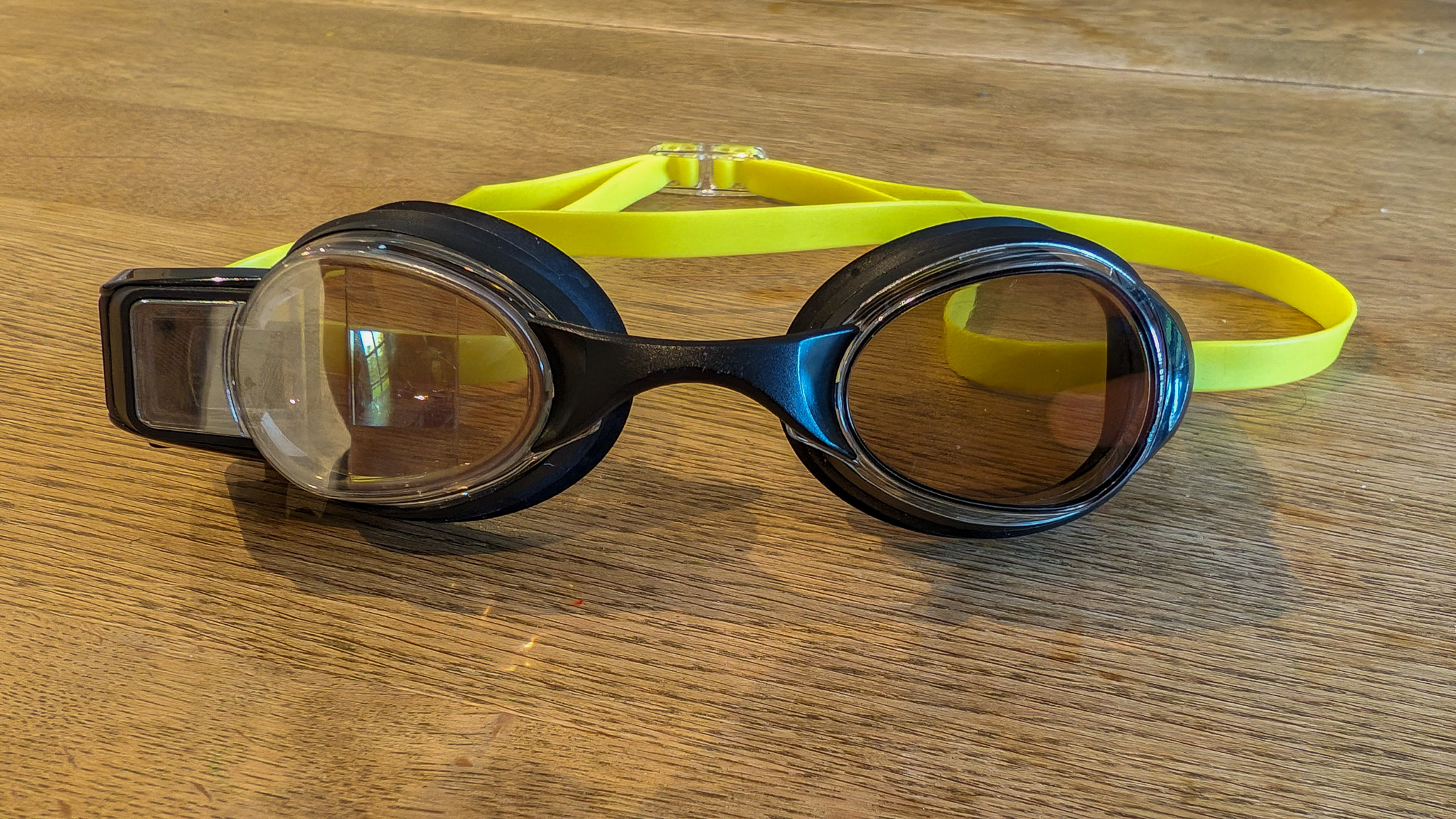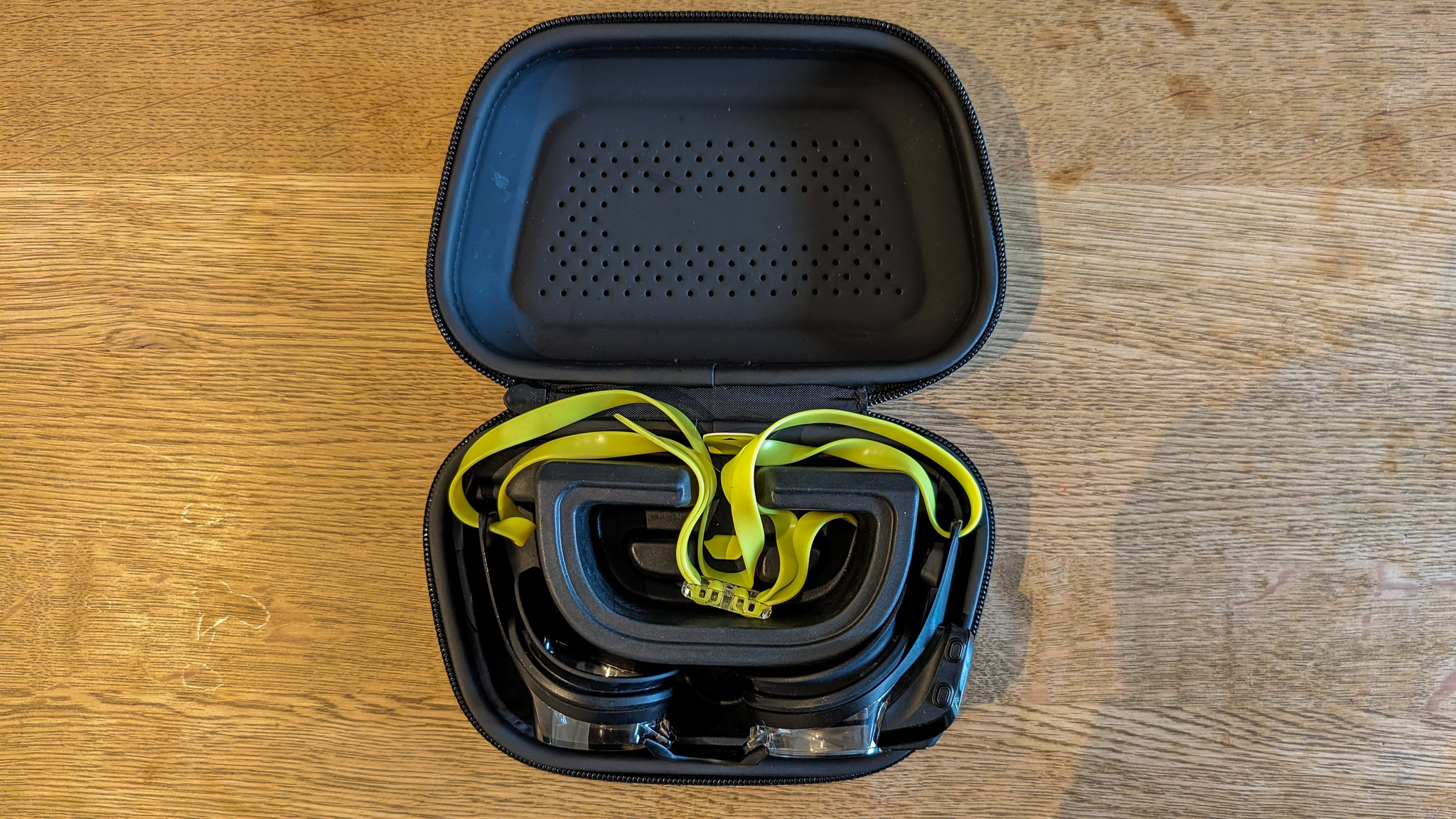Form Smart Swim 2 Goggles review: the world’s best swimming wearable just got better
Form adds an optical heart rate monitor and open water sighting assistance to create the ultimate smart swimming goggle


The Form Smart Swim 2 is a welcome upgrade to its pioneering predecessor, and the addition of a built-in, temple-based heart rate monitor helps it rival smartwatches when it comes to tracking swims. Its narrow field of vision, occasionally distracting AR screen, and subscription-based features mean it’s not a perfect experience, though.
-
+
Industry-leading swimming analysis
-
+
Able to track all swimming data rather than using a watch
-
+
HeadCoach helps you become a better swimmer
-
-
Narrow field of vision
-
-
AR screen can be distracting
-
-
Requires additional monthly subscription to get the most out of them
Why you can trust T3

Swimming goggles might seem like a basic necessity whether training in a pool, taking a dip in the open water, or racing a triathlon, but the premium-priced Form Smart Swim 2 Goggles bring pioneering data and analysis to the eye-base accessory arena.
An update on its original 2019 release, they’re an evolution rather than a revolution on their predecessor – the headline upgrades a built-in heart rate monitor and sighting assistance for open-water swimming.
The former means that they can now truly rival swimming smartwatches or triathlon watches in terms of tracking and analysing pool-based workouts in the accompanying Form Swim app. The latter is intended to give you the upper hand when competing in an open-water swim or triathlon.
Combined with other features like the ability to sync and follow workouts on the goggles’ AR display and Form’s HeadCoach technique analysis and in-pool tutorials, the smart goggles have a lot going for them.
But how do the Form Smart Swim 2 Goggles perform in the water? And can they justify their eye-watering price tag? I got my hands on a pair before they were released to find out.
Form Smart Swim 2 Goggles review
Price and availability
The Form Smart Swim 2 was announced on 2 April 2024 and is available to buy directly from Form UK, Form US and Form AU for the recommended retail price of £229/ $249/ AU$399.
Design and construction

Rather than starting from scratch, the Form Smart Swim 2 has used version one as the basis of its design and has refined things to create a sleeker pair of smart goggles. The onboard sensor still juts out from the side of one of the lenses, but Form claims that the housing of the accelerometer, gyroscope, magnetometer and barometer has been reduced in volume by 15%.
Get all the latest news, reviews, deals and buying guides on gorgeous tech, home and active products from the T3 experts
If you’re expecting an extremely hydrodynamic set for racing, the Finis smart goggles might be a better bet, but in practice, the additional drag during training is marginal at best.
The goggles themselves are made from durable plastic, and the lenses are mirrored and feature an anti-fog coating that I had no issues with throughout testing. The leak-free silicone eye seals did as they said on the tin, but can be replaced (along with the head strap) if required. They also come with six interchangeable nose bridges to help you find the perfect fit.
The heads-up display takes centre stage in one of the lenses, and can be worn on the left or right eye depending on personal preference. Form says that the display is visible for most with prescriptions up to -3, and I didn’t have any issues with reading the screen with my -1.75 left eye.
However, unlike other ‘dumb’ goggles I’ve tested, the combination of a relatively small lens, sensor housing and the hard joins between the front and side of the lenses narrowed the field of vision, making it quite hard to see other pool users and even led to me veering into the lane ropes on occasion.
I also found that the central positioning of the integrated AR display is quite dominating and can become distracting. While it’s possible to edit the swim screen and even turn the live data off during lengths, that also removes one of the Form Smart Swim 2 Goggles’ USPs.
The goggles come with a ventilated hardshell case, which helps to protect your investment between swims and allows excess water to evaporate if you don’t dry them off 100% before shoving them in your kit bag.
Performance and comfort
Despite their relative bulkiness, once the Form Smart Swim 2 goggles are on your face and in the water, they feel like a normal, non-smart set. Getting the fit dialled in is straightforward, thanks to the six interchangeable nose bridges, while the strap allows for further fine-tuning. The gaskets created a water-tight seal and remained comfortable during each swim, however they left quite big post-swim rings, suggesting they were on the firm side.
The integrated heart rate monitor is located on the inside of the onboard sensor’s housing, and the built-in optical sensor takes a pulse reading from your temple. Getting it sat in the correct place can be fiddly when wearing a swimming cap, but a heart rate test precedes each swim to confirm that the sensor is properly taking a reading.
During swims, the live data I tend to have to hand (stroke rate, split times, pace and heart rate) mirrored the accuracy of the Garmin Forerunner 955 Solar paired with the Garmin HRM Pro Plus I was testing alongside, and there were actually fewer issues with exaggerated distances that can sometimes plague smartwatches.
For the most precise heart rate reading, you’re best off using a third-party chest strap (which can’t be connected to the Form Smart Swim 2, meaning you’ll need a smartwatch recording alongside, too), but the data didn’t seem wildly different between the optical and chest sensor.

The Form Smart Swim 2 came into its own during workouts. In pre-planned workouts, the remaining lengths and rest countdown were easier to follow than any smartwatch I’ve used, while there were also fun icons that highlighted when it was time to pool accessories like a pull buoy or paddles.
The accompanying app also had a clever way of translating a workout written out in a third-party app such as TrainingPeaks into an interval-based session, saving me from having to create my session manually from my coach’s notes.
During any swim, the Form Smart Swim 2 uses AI to analyse your technique behind the scenes, providing you with a ‘Form score’ out of 100 after each workout based on your head pitch, peak head roll, time-to-neutral, set pacing, and interval pacing.
Known as HeadCoach and part of the Form Premium package (which costs £13 per month, but is included for two months for free with every purchase), it gives you advice on how to improve your swimming technique, as well as specific workouts you can follow in the pool to help improve the different pillars of swimming.
As someone who swims for triathlon and has a lot of room for improvement, the tuition was incredibly helpful and gamified skills like head pitch and head roll by turning each length into a mini-game of pong where you have to use your head’s position to keep a block within the respective lines depending on the skill. When returning to free swimming, the habit had been formed, and I noticed improvements in my overall speed.
The other main new feature of the Form Smart Swim 2 is the addition of ‘SwimStraight’ – essentially a sighting assistant that enables you to find the compass point of a buoy or turning point in open water and use AR guidance to help you take the most direct route. In practice, the technology worked well, however I still found myself intuitively lifting my head out of the water to sight myself every other breath, while the narrow field of vision wasn’t optimum for an open-water setting where being able to see another swimmer’s flailing leg can help you avoid a foot to the face.
Verdict

The Form Smart Swim 2 goggles are an interesting accessory for anyone looking to add some data, analysis and advice on technique to their time in the pool without forking out for a real-life coach. Their reasons to buy outweigh the issues with field of vision, which you will get used to the longer you wear them.
But it’s hard to overlook their cost, which makes them 1,000% more expensive than a standard £20 set of ‘dumb’ goggles, and that’s before you get to the monthly subscription required to unlock all their features.
If you’ve already invested in the company’s first release, I don’t think there are enough ground-breaking improvements to warrant an upgrade, especially when you consider that the Form Premium package (which includes the HeadCoach tutorials) is compatible with version one.
Also consider
If you don’t mind a slightly bulkier sensor housing and the lack of a built-in heart rate monitor and open water sighting assistance, then the original Form could be a good alternative. Plus, it’s possible to pair it with the Polar OH1+ optical sensor or an Apple Watch (regarded as the smartwatch with the most accurate heart rate sensor), meaning you won’t miss out on that all-important heart rate data.
Although I haven’t tested either, the only other smart swimming goggles on the market are the Finis Smart Goggle and the Holoswim Smart Swim Goggles 2S. The former uses a Ciye sensor that’s integrated within the left eye’s lens, and the AR aspect is located in your peripheral vision rather than front and centre. After each workout, you’re able to view a 3D video of your head motion during your swim, although there’s no AI analysis like Form’s HeadCoach.
The Holoswim offering, meanwhile, looks similar to the Form design but is limited to solely recording swimming metrics.

Charlie Allenby is a journalist with a passion for pedalling, and his first book, Bike London, the definitive guide to cycling in the UK's capital, is out now. He’s got a decade of experience in print and digital journalism and has worked as a writer and editor for many consumer and content marketing publications, including The Guardian, The Independent, BikeRadar and others.